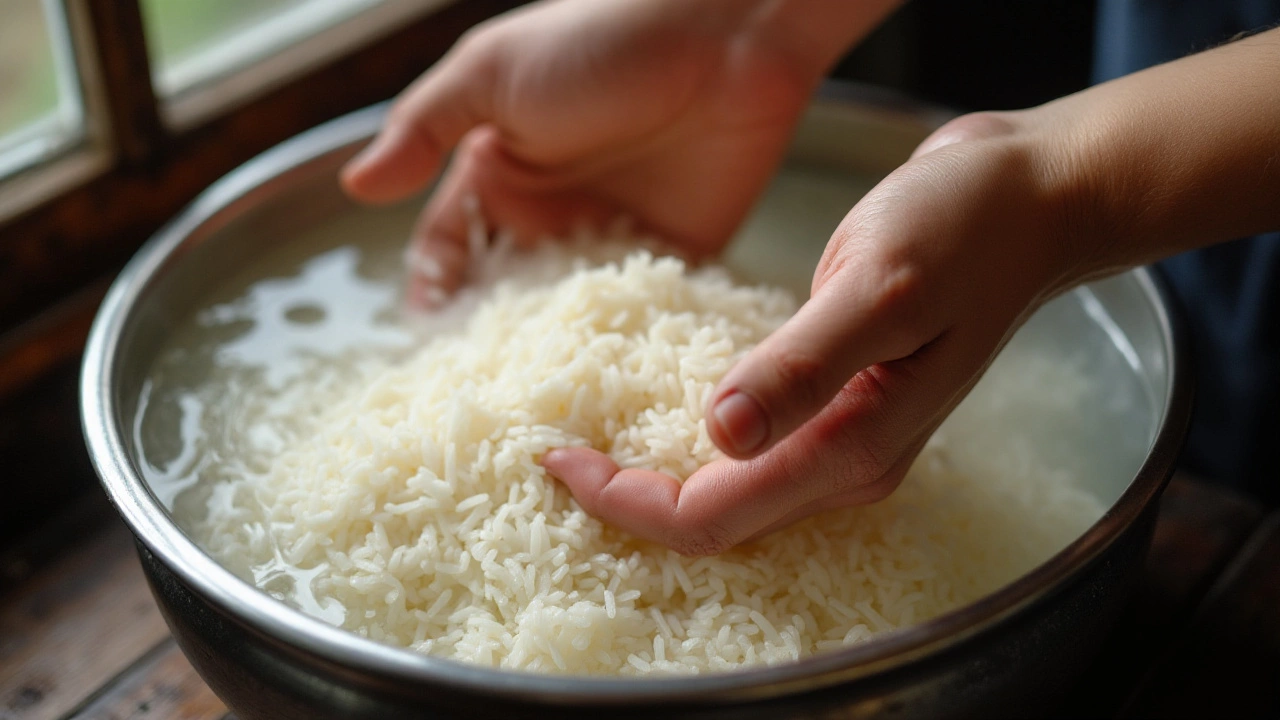Before the aroma of a warm bowl of rice fills the room, there is a simple yet crucial step often overlooked: washing the rice. This practice, rooted in both tradition and science, affects the texture, taste, and safety of the cooked rice. By rinsing away excess starch and impurities, one can elevate even humble grains to a dish of perfection. Get to know why this essential kitchen habit deserves your attention.
Clean Rice Cooking: How to Cook Rice Right Every Time
When you talk about clean rice cooking, the practice of rinsing or washing rice before cooking to remove excess starch and impurities. Also known as rice washing, it’s not just a ritual—it’s the difference between sticky, gummy rice and light, separate grains that taste better and digest easier. In Indian homes, where rice is eaten daily, skipping this step often leads to mushy pulao, clumpy biryani, or rice that sticks to the pot no matter how much oil you use.
Most people think rinsing rice is optional, but it’s not. The starch on the surface of rice grains—especially polished white rice—swells when heated and turns into glue. That’s why your rice turns into a paste if you don’t rinse it. Washing removes this starch, dust, and sometimes even tiny bits of husk or talc used in processing. It’s not about cleanliness alone; it’s about control. You want the rice to absorb water evenly, cook uniformly, and stay fluffy. This is especially true for basmati, which needs gentle handling to keep its long, aromatic strands intact. Even in pressure cookers or rice pots, skipping rinsing means uneven texture and wasted effort.
Some think soaking rice is enough, but soaking doesn’t replace rinsing. Soaking helps reduce cooking time and improves digestibility, but it won’t wash away the surface starch. Others believe rinsing removes nutrients, but the truth is, most vitamins and minerals are inside the grain, not on the surface. A quick rinse under cold water—three to five swirls—is all you need. Drain it well, then cook. That’s it. No fancy tools, no complicated steps. Just clean rice, clean results.
You’ll find this same principle in the way farmers manage soil before planting, or how gardeners prepare compost to avoid clumps. Clean input leads to clean output. In gardening, you don’t plant seeds in dirty soil. In cooking, you shouldn’t cook rice in sticky water. The same logic applies. Whether you’re making simple steamed rice for a weeknight meal or elaborate dosa batter that needs perfect texture, clean rice cooking is the quiet foundation that makes everything else work.
Below, you’ll find real guides from Indian kitchens and home gardens that tackle similar problems—how to get the right texture, avoid common mistakes, and make small changes that deliver big results. From soil amendments that loosen dense earth to drip systems that prevent clogs, these posts all share one thing: they fix what’s broken by going back to basics. Clean rice cooking is no different. It’s not magic. It’s just done right.
